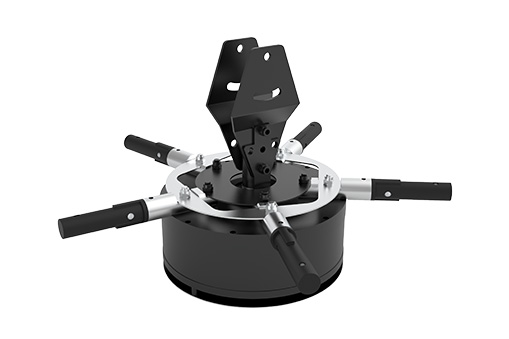30
2024
-
10
Main Factors Affecting Energy Consumption of Industrial Large Fan Motor
所属分类:
日期:
2024-10-30 09:35:24.368
1. Motor efficiency
-Definition and Principle
-Motor efficiency refers to the ratio of the output mechanical power of the motor to the input electrical power. High-efficiency motors reduce the energy loss inside the motor by optimizing the electromagnetic design of the motor and selecting high-quality materials, such as copper loss (loss caused by winding resistance) and iron loss (hysteresis and eddy current loss in the iron core). For example, the use of new silicon steel sheet materials can reduce iron loss and improve motor efficiency.
-Impact of efficiency on energy consumption
-When an inefficient motor is running, a large amount of electrical energy will be converted into heat energy and wasted. For example, a motor with an efficiency of 80% consumes more power at the same output power than a motor with an efficiency of 90%. If the motor power of a large industrial fan is 1.0kW and runs for 1000 hours, a motor with 80% efficiency consumes about 125 degrees of electricity more than a motor with 90% efficiency.

2. Load rate
-Relationship between load rate and energy consumption
-The load rate of industrial large fan motors has a significant impact on energy consumption. When the motor load rate is low, the efficiency of the motor will be reduced, resulting in an increase in energy consumption per unit output power. For example, if the optimal load rate of the motor is 70% - 80%, when the load rate is 30%, the efficiency of the motor may drop from the highest 90% to about 70%, and the energy consumption will increase significantly.
-Load situation of industrial large fan in actual operation
-In actual industrial applications, the load of large industrial fans will be affected by many factors. For example, in some large workshops, air flow requirements may vary with the production process, resulting in unstable fan loads. In some periods, only a lower speed may be required to meet the ventilation requirements, but if the motor cannot be effectively adjusted according to the load, it will cause energy waste.
3. Speed regulation mode
-Energy consumption characteristics of different speed regulation methods
-Constant speed operation: The traditional motor without speed control function can only run at a fixed speed. In this case, regardless of the actual ventilation demand, the motor is running at rated power, and when the ventilation demand is low, energy will be wasted. For example, at night or in a workshop area with fewer personnel, high-intensity ventilation is not required, but the constant speed motor still runs at full speed.
-Variable frequency speed regulation: The variable frequency speed regulation motor can adjust the speed according to actual needs. According to the similarity law of the fan, the air volume of the fan is proportional to the speed, and the power of the motor is proportional to the cube of the speed. Therefore, by reducing the speed, the power of the motor will be greatly reduced, thereby achieving energy saving. For example, by reducing the speed to 80% of the rated speed, the power can be reduced to 51.2 (0.8 ³) of the rated power.
Recommended News


 400-086-9230
400-086-9230 

 联系我们
联系我们 

 sales@dawangfanschina.com
sales@dawangfanschina.com 



